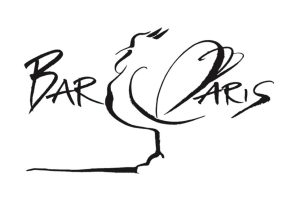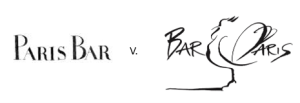Healthy things and Paris Bar – two new GC decisions on “weak marks”
by Verena von Bomhard – Published on 15 March, 2024 at Kluwer Trademark Blog

On 13 March 2024, the General Court (3rd and 7th Chamber) issued two judgments dealing with weak marks in the sense the most trademark practitioners applaud, namely granting descriptive elements in trademarks only a minimal scope of protection. In both cases, this led to the GC confirming the decisions of the Fifth Board of Appeal of the EUIPO, which had found no likelihood of confusion – contrary, in both instances, to the decisions of the first instance opposition examiners. Already in 2023, we saw a number of similar decisions, although the number of contrary decisions was about even so one could not really see a trend away from overprotecting weak marks at EU level (see the retrospect on 2023 case law of the General Court here). 2024, in this respect, is off to a promising start!
One case (T-117/23) confronted the German mark PARIS BAR and the EUTM application BAR PARIS (unsurprisingly, for class 43 services) as follows:

In the other case (T-206/23), the Spanish word mark “SANODIN” protected in class 5 for treatments of inflammations of the mouth was held against the EUTM application “sanoid” applied for goods and services in multiple classes (including class 5) in relation to cannabis products:

In BAR PARIS, the GC started its analysis determining the dominant and distinctive elements of the marks at issue, discussing this in no less than 22 paragraphs and concluding (at § 50) that none of the elements of the marks at issue were dominant or more distinctive than the others. This may be surprising especially with a view to the earlier German mark consisting essentially of the – only slightly stylized – words “PARIS BAR”. Anyway, this conclusion did not keep the Court from denying likelihood of confusion based on the “very weak distinctiveness” of the word elements. It expressly stated that the phonetic and conceptual similarities between the marks rested exclusively on the weak word elements, so that the figurative elements gained greater weight (§ 100), and that the visual differences enabled consumers clearly to distinguish between the signs “against the backdrop of the very weak distinctiveness of the earlier mark” (§ 101).
In Sanoid, the GC first dealt at length (§§ 27 – 86) with the similarity of the goods and services – the contested application covered a wide range of goods and services, quite a number of which were obviously dissimilar to mouth inflammation treatments (e.g. classes 31, 32, 35, 41) but were all individually addressed by the Court. This section contains some interesting statements but these are not the focus of this blog article.
The Court then turned to the comparison of the marks – starting with the assessment of dominant and distinctive elements. Here, it should be noted that “sano” in Spanish means nothing but “healthy”, and the earlier mark SANODIN was a Spanish mark so that it was the understanding of the Spanish public that mattered. This prompted the GC to state that the relevant public would focus on the endings “DIN” and “id” given the descriptiveness of “sano” (§ 99). This laid the ground for considering the visual and phonetic similarities deriving from the coinciding element “sano” to be to a low degree, and the conceptual overlap to be irrelevant – all leading to an absence of likelihood of confusion.
The judgments are refreshingly clear and the conclusions are sensible. Hopefully sense continues to prevail both in Alicante and in Luxembourg!


